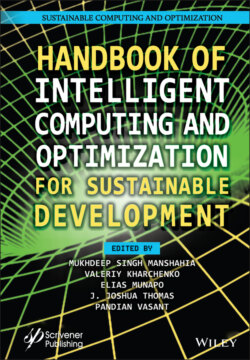Читать книгу Handbook of Intelligent Computing and Optimization for Sustainable Development - Группа авторов - Страница 118
5.2 Machine/Deep Learning for Future Wireless Communication
ОглавлениеA typical wireless communication system comprises of a transmitter, channel, and receiver. The design of the transmitter and receiver is described by the channel model and its underlying physical phenomenon [21]. Signaling schemes are developed corresponding to system’s requirements, such as ease of implementation, robustness to channel impairments, and transmit power minimization [6]. Likewise, detection algorithms are devised to enhance system performance subject to the constraints. Generally, a frequency below 10 GHz are utilized by the current wireless communication systems. In these systems, the channels adapt to flexible mathematical models that define electromagnetic propagation with rational accuracy. However, in other systems, the channel models are not easily described. ML concept mostly considered as a tool has created a revolution in modern day computing over the past years [22]. With easier to handle with today’s hardware and software solutions, ML has created a diverse range of algorithms that has enabled the development of intelligent, fast, and adaptive systems. Many applications such as unmanned armed vehicles, navigation systems, and big data analysis have efficiently proved the need and importance of DL, rather than using traditional strict and complex algorithms. DL is basically a sub decision of ML. Mostly DL is being used for prediction, processing of data, analysis of data, and classification of data [11]. Some of the fields where DL is immensely used are computer vision, image processing, and stock market data predictions which are very important part of our day-to-day life [23]. Our daily used products such as personal computers, laptops, mobile phones, and tablets use DL where every upgrade comes with a new technique used. Much research on DL and its application are being done every day and researchers are making use of all possible methods to utilize it efficiently for the modern wireless communication scenarios. The modern-day wireless communication deal with the need of increasing high data rates, demand of much more bandwidth, and many more radically used applications, which, in turn, requires novel signal processing techniques [2].
When we consider the use of millimeter wave (mmWave) spectrum, it addresses the issue of need for more bandwidth and high data rate because of its nature. For example, when we consider mmWave precoding, the use of DL for predicting the precoding matrices has shown to reduce the channel training overhead when compared traditional singular value decomposition methods [9]. The computational complexity of the problem is taken care of by using DL, because of its ability of learning from data. The applications of wireless communications involving real-time scenarios such as data monitoring and video streaming, which play a major part of modern day, have improved a lot today because of the growing usage and new research being done in DL. The classification of digital and analog modulating signals is done with some key features in [25]. DL/ML has wide range of applications in the wireless communication systems as can be seen in Figure 5.1. The some of the most relevant and in scope of this study are discussed in detail. DL as discussed previously is a subbranch of ML and is considered in our application because of its capability to handle much larger data sets, creating a more complex neural network (NN). The major difference between them is that ML is used for small signal data, whereas DL is used for high dimensional data and has a good performance in real-time scenarios. Some popular algorithms in DL are convolutional neural networks (CNN), recurrent neural networks (RNN), long short-term memory networks (LSTMs), stacked auto-encoders, deep Boltzmann machine (DBM), and deep belief networks (DBNs) [26]. Every algorithm is uniquely designed and has many wide range of applications in wireless communication. A few of them are discussed in the subsequent subsections. These wireless applications are chosen based on their popularity and suitability for ML/DL algorithms.
Figure 5.1 ML application for communications (re-generated from [24]).
